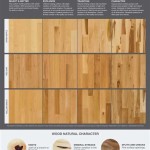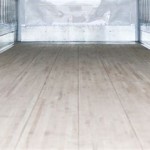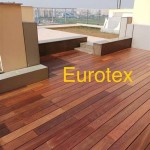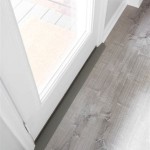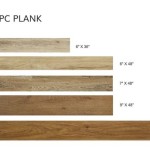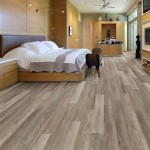Vapor Barrier: An Essential Underlayment for Laminate Flooring
Laminate flooring is a popular choice for both residential and commercial spaces due to its durability, affordability, and aesthetic appeal. However, its long-term performance and appearance are significantly influenced by factors often overlooked during installation. One of the most crucial of these factors is the proper use of a vapor barrier, also known as a moisture barrier, placed beneath the laminate planks. This article will delve into the importance of vapor barriers when installing laminate flooring, explaining their function, necessity, and the various types available.
Laminate flooring, while relatively resistant to surface moisture, is susceptible to damage from moisture rising from the subfloor. Subfloors, particularly concrete slabs, often harbor residual moisture or are affected by changes in humidity levels. Without a proper vapor barrier, this moisture can permeate the laminate, leading to warping, buckling, mold growth, and ultimately, a reduced lifespan of the flooring. The vapor barrier acts as a protective shield, preventing moisture migration and maintaining the integrity of the laminate.
The presence of excessive moisture is particularly problematic for laminate flooring due to its construction. The core of most laminate flooring is typically made of high-density fiberboard (HDF) or medium-density fiberboard (MDF). These materials are highly absorbent and will swell when exposed to moisture. This swelling can cause the laminate planks to expand, potentially leading to buckling, separating at the seams, and making the floor uneven. Mold and mildew can also thrive in the moist environment beneath the laminate, posing health risks and further damaging the flooring structure.
The need for a vapor barrier is dictated by factors such as the type of subfloor, the ambient humidity levels, and the specific manufacturer's recommendations for the laminate flooring being installed. In general, all laminate installations over concrete subfloors require a vapor barrier. Wood subfloors may also require one, especially in areas with high humidity or if the crawl space beneath the floor is not properly ventilated.
Understanding the Function of a Vapor Barrier
The primary function of a vapor barrier is to prevent moisture from migrating from the subfloor into the laminate flooring. This is achieved by creating a physical barrier that restricts the passage of water vapor. This helps in preventing warping, cupping, and buckling of the laminate planks, thus extending the life of the flooring.
Beyond preventing structural damage, a vapor barrier also helps to inhibit the growth of mold and mildew. These organisms thrive in moist environments and can cause respiratory problems, allergies, and other health concerns. By preventing moisture accumulation beneath the laminate, the vapor barrier creates an inhospitable environment for mold and mildew growth, contributing to a healthier indoor environment.
A vapor barrier can also contribute to the overall comfort of the room. By preventing moisture from rising through the floor, it can help to regulate the temperature and humidity levels in the room, creating a more comfortable living space. This is particularly beneficial in basements and other areas that are prone to dampness.
Furthermore, some vapor barriers also offer additional benefits such as sound dampening and thermal insulation. These features can help to reduce noise transmission and improve the energy efficiency of the room, making it a more pleasant and cost-effective space to live in.
Types of Vapor Barriers for Laminate Flooring
Various types of vapor barriers are available for laminate flooring installations, each with its own characteristics and suitability for specific applications. The choice of vapor barrier depends on factors such as the type of subfloor, the level of moisture protection required, and the budget.
One common type is polyethylene film, a thin plastic sheet placed between the subfloor and the underlayment (if used) or directly under the laminate flooring. Polyethylene film is cost-effective and readily available, making it a popular choice for many installations. The thickness of the film is an important consideration, with thicker films providing better moisture protection. Typically, a 6-mil (0.006 inch) polyethylene film is recommended for most applications.
Another option is specialized underlayment with an integrated vapor barrier. These underlayments often consist of a foam or cork layer with a polyethylene film attached to the bottom. This type of underlayment provides both moisture protection and cushioning, enhancing the comfort and sound insulation of the floor. Integrated vapor barrier underlayments are particularly convenient as they simplify the installation process by combining two functions into one product.
For situations requiring enhanced moisture protection, such as installations in basements or areas with high water tables, more robust vapor barriers are available. These may include thicker polyethylene films, reinforced membranes, or even liquid-applied moisture mitigation systems. These systems are designed to create a virtually impermeable barrier against moisture migration.
Additionally, some laminate flooring products come with a pre-attached underlayment that includes an integrated vapor barrier. This simplifies the installation process and ensures that the flooring is properly protected from moisture. However, it is essential to verify that the integrated vapor barrier meets the requirements for the specific subfloor and environmental conditions.
Proper Installation Techniques for Vapor Barriers
The effectiveness of a vapor barrier depends not only on the type of material used but also on the quality of the installation. Improper installation can compromise the integrity of the barrier and allow moisture to seep through, negating its protective benefits.
The first step in installing a vapor barrier is to ensure that the subfloor is clean, level, and dry. Any debris, cracks, or unevenness should be addressed before laying the vapor barrier. Cracks in concrete should be filled with a suitable patching compound, and the subfloor should be thoroughly swept and vacuumed to remove any dust or dirt.
When installing polyethylene film, it is important to overlap the seams by at least 6 inches. The seams should be sealed with moisture-resistant tape to prevent moisture from penetrating through the overlaps. The film should also be extended up the walls by a few inches and taped in place. This helps to create a continuous barrier against moisture migration.
When using an underlayment with an integrated vapor barrier, follow the manufacturer's instructions carefully. Most underlayments have overlapping edges that should be taped together to create a seamless barrier. Ensure that the underlayment is properly aligned and that there are no gaps or wrinkles.
For liquid-applied moisture mitigation systems, follow the manufacturer's detailed instructions for application. These systems typically require multiple coats and must be allowed to dry completely before installing the laminate flooring. Proper surface preparation is crucial for the adhesion and effectiveness of these systems.
Regardless of the type of vapor barrier used, it is important to inspect the installation for any imperfections. Check for any tears, punctures, or gaps in the barrier and repair them immediately. A thorough inspection will help to ensure that the vapor barrier is providing the intended level of protection.
In summary, installing a vapor barrier is a critical step in ensuring the long-term performance and longevity of laminate flooring. By preventing moisture migration from the subfloor, the vapor barrier protects the laminate from warping, buckling, and mold growth. Choosing the right type of vapor barrier and installing it properly are essential for creating a healthy, comfortable, and durable flooring system.

What Is A Moisture Barrier And When It Needed For Flooring Inc

Quietwalk 100 Sq Ft 3 X 33 Mm Underlayment With Sound And Moisture Barrier For Laminate Engineered Floors Qw100b1lt The Home Depot

Quietwalk Underlayment For Floating Floors The Green Design Center

Vapor Barrier Under Laminate Floor And Floating Problems

What Is A Moisture Barrier And When It Needed For Flooring Inc

How To Install The Moisture Barrier Over Concrete Subfloor

Does The Quiet Walk Underlayment Plastic Vapor Barrier Face Up Or Down When Installing Mp Global S Llc

Mp Global Quiet Walk 6x60 Ft Acoustic Floating Laminate Floor Underlayment Com

Underlayment Buyer S Guide

6 Mil Vapor Barrier Underlayment Over Concrete Floors
Related Posts

